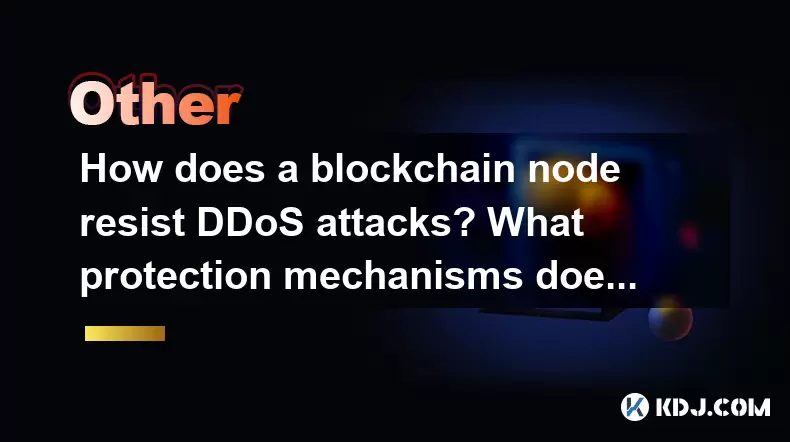-
 Bitcoin
Bitcoin $114800
-3.31% -
 Ethereum
Ethereum $3641
-5.84% -
 XRP
XRP $2.948
-6.36% -
 Tether USDt
Tether USDt $0.9998
-0.03% -
 BNB
BNB $772.4
-3.97% -
 Solana
Solana $169.1
-6.68% -
 USDC
USDC $0.9999
-0.01% -
 Dogecoin
Dogecoin $0.2056
-8.09% -
 TRON
TRON $0.3247
-0.18% -
 Cardano
Cardano $0.7239
-7.43% -
 Hyperliquid
Hyperliquid $39.71
-8.60% -
 Stellar
Stellar $0.3912
-7.84% -
 Sui
Sui $3.510
-10.17% -
 Chainlink
Chainlink $16.59
-8.03% -
 Bitcoin Cash
Bitcoin Cash $560.5
-3.65% -
 Hedera
Hedera $0.2464
-10.08% -
 Avalanche
Avalanche $22.03
-7.87% -
 Ethena USDe
Ethena USDe $1.001
-0.02% -
 UNUS SED LEO
UNUS SED LEO $8.947
0.21% -
 Toncoin
Toncoin $3.389
-2.58% -
 Litecoin
Litecoin $104.9
-5.23% -
 Shiba Inu
Shiba Inu $0.00001220
-6.67% -
 Polkadot
Polkadot $3.652
-6.10% -
 Uniswap
Uniswap $9.213
-9.05% -
 Monero
Monero $307.2
-2.93% -
 Dai
Dai $0.9998
-0.02% -
 Bitget Token
Bitget Token $4.367
-2.89% -
 Cronos
Cronos $0.1374
-6.80% -
 Pepe
Pepe $0.00001056
-8.65% -
 Aave
Aave $257.3
-7.31%
How does a blockchain node resist DDoS attacks? What protection mechanisms does it have?
Blockchain nodes resist DDoS attacks using rate limiting, IP blacklisting, firewalls, IDS, load balancing, redundancy, and cryptographic techniques like PoW and PoS.
May 16, 2025 at 12:07 am

Introduction to DDoS Attacks and Blockchain Nodes
DDoS, or Distributed Denial of Service, attacks are a major threat in the digital world, including the realm of cryptocurrencies. These attacks aim to overwhelm a system, such as a blockchain node, with traffic to disrupt its normal functioning. Blockchain nodes are critical components of a blockchain network, responsible for maintaining and validating the blockchain. Given their importance, it's crucial to understand how these nodes resist DDoS attacks and the protection mechanisms they employ.
Understanding DDoS Attacks on Blockchain Nodes
A DDoS attack on a blockchain node typically involves flooding the node with a high volume of traffic from multiple sources. This can lead to the node becoming unresponsive, thereby affecting the overall integrity and functionality of the blockchain network. The attackers often use botnets, compromised devices controlled remotely, to execute these attacks. The goal is to disrupt the node's ability to process transactions and validate blocks, which can have severe implications for the entire network.
Basic Protection Mechanisms of Blockchain Nodes
Blockchain nodes employ several basic protection mechanisms to resist DDoS attacks. One of the primary methods is rate limiting, which restricts the number of requests a node can process within a given time frame. This helps prevent the node from being overwhelmed by excessive traffic. Additionally, IP blacklisting is used to block traffic from known malicious IP addresses. These basic measures provide a first line of defense against DDoS attacks.
Advanced Protection Mechanisms: Firewalls and Intrusion Detection Systems
To enhance their resistance to DDoS attacks, blockchain nodes often integrate more advanced protection mechanisms. Firewalls play a crucial role in filtering incoming traffic and blocking suspicious requests. They can be configured to allow only legitimate traffic to reach the node, thereby reducing the risk of a successful DDoS attack. Intrusion Detection Systems (IDS) are another vital component, monitoring network traffic for signs of malicious activity and alerting administrators to potential threats. These systems help in identifying and mitigating DDoS attacks in real-time.
Network-Level Protection: Load Balancing and Redundancy
At the network level, blockchain nodes can employ load balancing to distribute incoming traffic across multiple nodes. This not only helps in managing high volumes of traffic but also ensures that no single node becomes a single point of failure. Redundancy is another key strategy, where multiple nodes are deployed to handle the same tasks. If one node is targeted by a DDoS attack, other nodes can continue to operate, maintaining the network's overall functionality.
Cryptographic and Consensus-Based Protections
Blockchain nodes also leverage cryptographic techniques to enhance their resistance to DDoS attacks. For instance, proof-of-work (PoW) consensus mechanisms require attackers to expend significant computational resources to launch a successful attack, making it economically unfeasible. Similarly, proof-of-stake (PoS) systems can deter DDoS attacks by requiring attackers to have a significant stake in the network, which they risk losing if their attack is detected.
Practical Steps to Enhance Node Security
To further bolster the security of a blockchain node against DDoS attacks, administrators can take several practical steps:
- Regularly update and patch software: Keeping the node's software up-to-date helps protect against known vulnerabilities that attackers might exploit.
- Implement strong authentication: Use robust authentication methods to prevent unauthorized access to the node.
- Monitor network traffic: Continuously monitor network traffic to detect and respond to unusual patterns that may indicate a DDoS attack.
- Use a Content Delivery Network (CDN): A CDN can help distribute traffic and reduce the load on individual nodes.
- Configure network security policies: Set up strict network security policies to filter out malicious traffic and protect the node from DDoS attacks.
Case Studies: Successful DDoS Mitigation in Blockchain Networks
Several blockchain networks have successfully mitigated DDoS attacks through a combination of the aforementioned protection mechanisms. For instance, Bitcoin has implemented various strategies to protect its nodes, including rate limiting and IP blacklisting. Similarly, Ethereum has employed load balancing and redundancy to ensure the network remains operational even during DDoS attacks. These case studies highlight the effectiveness of a multi-layered approach to DDoS protection in blockchain networks.
Frequently Asked Questions
Q: Can a DDoS attack completely shut down a blockchain network?
A: While a DDoS attack can disrupt the functioning of individual nodes, completely shutting down an entire blockchain network is challenging due to the decentralized nature of blockchains. Networks with robust protection mechanisms and redundancy can continue to operate even if some nodes are compromised.
Q: How do blockchain nodes detect DDoS attacks?
A: Blockchain nodes use a combination of intrusion detection systems, network traffic monitoring, and anomaly detection algorithms to identify DDoS attacks. These systems analyze traffic patterns and alert administrators to any unusual activity that may indicate an attack.
Q: Are there any specific tools recommended for protecting blockchain nodes from DDoS attacks?
A: Several tools can be used to protect blockchain nodes from DDoS attacks, including firewalls like iptables, intrusion detection systems like Snort, and load balancing solutions like HAProxy. Additionally, services like Cloudflare can provide DDoS protection at the network level.
Q: How can node operators prepare for potential DDoS attacks?
A: Node operators can prepare for DDoS attacks by implementing the protection mechanisms discussed, regularly updating their software, monitoring network traffic, and having a response plan in place. Collaborating with other node operators and sharing information about potential threats can also enhance preparedness.
Disclaimer:info@kdj.com
The information provided is not trading advice. kdj.com does not assume any responsibility for any investments made based on the information provided in this article. Cryptocurrencies are highly volatile and it is highly recommended that you invest with caution after thorough research!
If you believe that the content used on this website infringes your copyright, please contact us immediately (info@kdj.com) and we will delete it promptly.
- Bitcoin, Ethereum, and Investor Behavior: A New York Minute on Crypto Trends
- 2025-08-01 15:10:12
- Tether's Q2 Triumph: USDT Supply Soars Amidst Profit Surge!
- 2025-08-01 15:10:12
- Ethereum ETF Holdings: A Corporate Treasury Revolution?
- 2025-08-01 15:30:12
- Ethereum's Wild Ride: Funding Rates, Price Drops, and Retail to the Rescue!
- 2025-08-01 15:30:12
- Ethereum Under Pressure: Crypto Market Drop Explained
- 2025-08-01 15:35:11
- Ethereum ETF Mania: Inflows Surge, Market Rises, What's Next?
- 2025-08-01 15:35:11
Related knowledge

How to start a business using blockchain?
Jul 28,2025 at 12:36am
Understanding the Basics of Blockchain TechnologyBefore diving into the process of starting a business using blockchain, it's crucial to understand wh...

What is a token on the blockchain?
Jul 21,2025 at 07:00am
Understanding the Concept of a TokenIn the realm of blockchain technology, a token is a digital representation of an asset or utility that exists on a...

Can blockchain be used for identity verification?
Jul 18,2025 at 02:14pm
Understanding Identity Verification in the Digital AgeIn the modern digital landscape, identity verification has become a critical component for ensur...

What is a consensus mechanism in blockchain?
Jul 21,2025 at 03:01am
Understanding the Basics of Consensus MechanismsA consensus mechanism is a critical component of any blockchain network. It refers to the process by w...

How to explain blockchain to someone with no tech background?
Jul 18,2025 at 11:08pm
Understanding the Basics of BlockchainTo explain blockchain to someone with no tech background, it's essential to start with simple analogies and avoi...

Who invented blockchain technology?
Jul 23,2025 at 01:28am
Origins of Blockchain TechnologyBlockchain technology did not emerge from a single inventor or institution. Instead, it evolved through a series of ac...

How to start a business using blockchain?
Jul 28,2025 at 12:36am
Understanding the Basics of Blockchain TechnologyBefore diving into the process of starting a business using blockchain, it's crucial to understand wh...

What is a token on the blockchain?
Jul 21,2025 at 07:00am
Understanding the Concept of a TokenIn the realm of blockchain technology, a token is a digital representation of an asset or utility that exists on a...

Can blockchain be used for identity verification?
Jul 18,2025 at 02:14pm
Understanding Identity Verification in the Digital AgeIn the modern digital landscape, identity verification has become a critical component for ensur...

What is a consensus mechanism in blockchain?
Jul 21,2025 at 03:01am
Understanding the Basics of Consensus MechanismsA consensus mechanism is a critical component of any blockchain network. It refers to the process by w...

How to explain blockchain to someone with no tech background?
Jul 18,2025 at 11:08pm
Understanding the Basics of BlockchainTo explain blockchain to someone with no tech background, it's essential to start with simple analogies and avoi...

Who invented blockchain technology?
Jul 23,2025 at 01:28am
Origins of Blockchain TechnologyBlockchain technology did not emerge from a single inventor or institution. Instead, it evolved through a series of ac...
See all articles

























































































